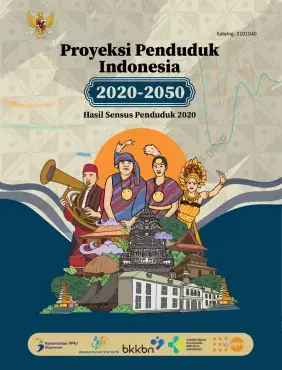Indonesia Population Projections 2020–2050: Supporting Sustainable Development Planning
The Government of Indonesia has established the National Long-Term Development Plan (RPJPN) 2005–2025 and the National Medium-Term Development Plan (RPJMN) 2020–2024. Additionally, efforts are currently underway to formulate the RPJPN 2025–2045 and the RPJMN 2025–2029. These strategic planning documents serve as the government’s guiding framework for implementing national development policies. To ensure accurate and effective development planning, up-to-date demographic data and future projections are essential. These data not only include total population figures but also key demographic parameters such as age structure, birth rates, mortality rates, and life expectancy at birth. Reliable population projections provide a critical foundation for evaluating past development progress and formulating future policies.
The publication of Indonesia Population Projections 2020–2050, based on the 2020 Population Census, is a collaborative effort between the Ministry of National Development Planning/National Development Planning Agency (Kementerian PPN/Bappenas), Statistics Indonesia (BPS), and the United Nations Population Fund (UNFPA). The development process also involved key institutions, including the National Population and Family Planning Board (BKKBN), the Ministry of Health, and leading demography experts. The technical calculations were conducted by BPS, ensuring the highest level of data accuracy and methodological rigor.
This publication provides essential insights into population trends and their implications for various sectors, including economic development, education, healthcare, and urban planning. By utilizing these projections, policymakers and stakeholders can make informed decisions to address emerging demographic challenges and opportunities. Furthermore, this resource aims to support the development of evidence-based strategies to achieve Indonesia’s long-term sustainability and social welfare goals.



